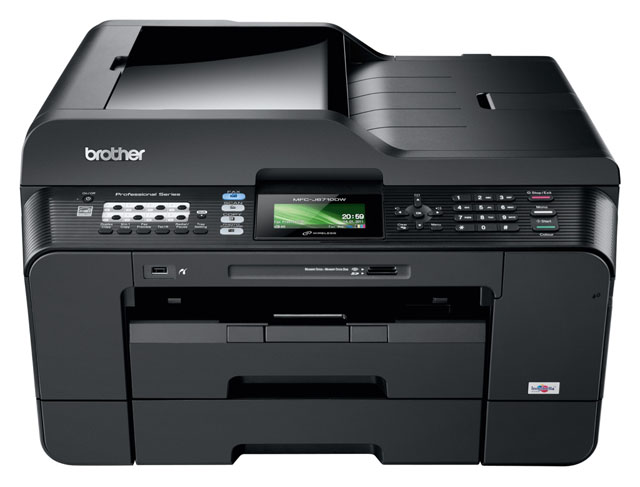
Journey back a decade ago, when both inkjet and laser printers had their own definite places. While lasers offered top quality and high speed, inkjets offered great colors and a good overall quality at less expense. At the same time, lasers were expensive to buy but cheap to run, whilst inkjets were exactly the opposite. For an office that needs to constantly print large volumes of paper every day, but keep running costs at minimum, choosing between the two can become a time-extensive and emotionally-challenging task. To help you make a researched decision, we have compiled an in-depth comparison of inkjet and laser printers below.

- Speed
Not very long ago, speed used to be the key area where lasers had the upper hand. Even fairly decent inkjet printers can now provide a speed of 30ppm in black-and-white printing mode, or 24ppm in color printing mode, though many are stuck at under 15ppm in black-and-white, or 10ppm in color. While that might seem fine for occasional printing in a small company, it definitely isn’t enough for a larger office. Thankfully, laser printers can save the day due to their speedy 40ppm in both black-and-white and color, which is ideal if you have dozens of people who need to consistently print large loads of paper on a day-to-day basis.
But inkjet printers have greatly evolved over the last ten years. Many high-end peripherals can now print up to 70 pages per minute in both black-and-white and color, which means that you’ll no longer have to compromise speed if you choose an inkjet printer instead.
- Print Quality
Inkjets have always triumphed when it comes to print quality, especially if we’re talking about color printing. In spite of laser printers producing better – and much crisper – black-and-white texts, their print quality is significantly inferior when compared to that of an inkjet. It’s important to keep in mind that, even though the latter one can’t print imagery to the quality of a six-color photo printer, you’ll certainly be pleased with the results if you need to actively print colorful documents in your office.
On the other hand, if you know you’re not going to print many images, or other colorful elements, then you can confidently go for a laser printer.
- Cartridges and Running Costs
One of the most important aspects you need to keep in mind when it comes to buying a printer is the running cost of the peripheral in question. It’s been said that lasers are typically expensive to buy and cheap to run, whilst inkjets are quite cheap but more expensive to run. However, things can get a lot more complicated than that. For example, a couple of laser printers use smaller and more expensive cartridges, so they aren’t that cheap to run after all. On the other hand, most inkjets have seen huge improvements in this particular area, especially since some of them use high-yield cartridges that are capable of printing 9,200 black-and-white pages, or 6,600 color pages. If we calculate the cost of printing for each of the two, that would be around 1p for black-and-white printing, and around 5p for color printing.
To top that off, many inkjets use 50 percent the energy of some lasers, not to mention that’s possible to buy an inkjet that costs 50 percent less than equivalent lasers. As such, instead of spending your money on original Canon cartridges for your Canon laser printer, you can consider buying an inkjet one, and choosing to use no-name cartridges when needed.
- Paper Handling and Workloads
In addition to printing speed, quality, and costs, there’s also the paper handling capacity of the printer you’re planning to buy. Most lasers have been specifically designed to handle anywhere between 2,000 and 4,000 pages per month, and some high-end models can actually handle much more, going between 5,000 and 20,000 pages. Though their performance has been dramatically impacted, inkjets are still unable to reach the same outstanding paper handling capabilities of lasers. On average, an inkjet printer will print up to 4,200 pages per month, though most limit to only 1,100 or 1,600 pages.
If you’re in need of a printer that can truly handle lots of pages, a laser will surely be the best to go. On the other hand, if you’re looking at a daily workload of 50 to 200 pages, then you should consider an inkjet.
Conclusion
It’s difficult to say whether you should buy an inkjet or a laser printer, but based on your individual needs, you should be able to make a choice quickly. If speed, printing quality, and running costs matter to you, then you should consider getting an inkjet, but if you’re interested in speed, good black-and-white printing capacities and huge daily workload, then a laser might be the best for you. Make sure to carefully review different models before choosing one, as this will permit you to successfully compare prices, and see where the peripherals excel and where they could be better.
To browse and compare canon printers visit Canon official site or your favorite review site before you purchase one.
















